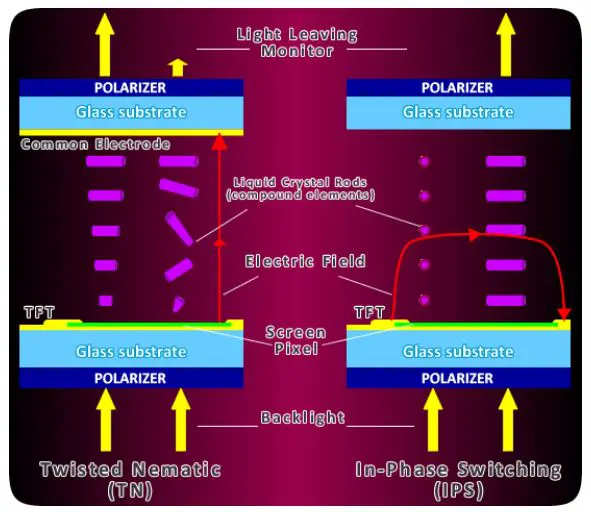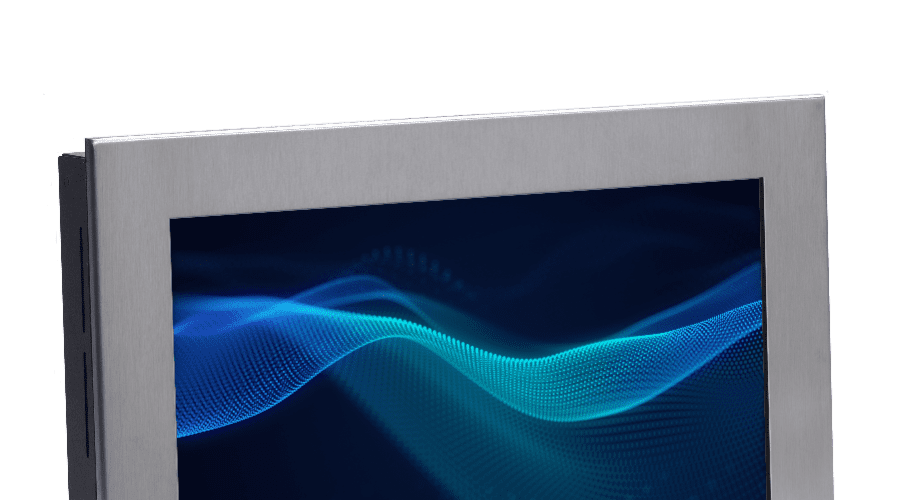
In-Plane Switching (IPS) was one of the first refinements to produce significant gains in the light-transmissive characteristics of TFT panels. Jointly developed by Hosiden and NEC, it is a technology that addresses the two main issues of a standard twisted nematic (TN) TFT display: color and viewing angle.
With IPS, the crystals are aligned horizontally to the screen rather than vertically, and the electrical field is applied between each end of the crystal molecules – termed a lateral electric field. In this way, the crystals are kept parallel to the the electrode pair, and thus the glass substrate of the screen. The liquid crystal molecules are not anchored to the lower glass substrate, so move more freely into the desired alignment.
Comparing TN and IPS Light Flow Through LCD Monitors
In a TN TFT display when one end of the liquid crystal is anchored to the lower glass substrate and a voltage is applied, the crystal compounds untwist, changing the angle of polarisation of the transmitted light. A downside of basic TN technology is that the alignment of molecules of liquid crystal alters the further away they are from the anchored electrode, turning at right angles to the substrates. This impairs the flow of light causing diminishing contrast, brightness and colour definition at wider angles to the screen.

IPS improves viewing angles of TFT monitors considerably, but means that two transistors are needed for every pixel, instead of the one needed for a TN TFT display. Using two transistors means that more of the transparent area of the display is blocked from light transmission, so brighter backlights must be used. The increased power consumption can make the displays unsuitable for notebook use, but in higher end industrial displays viewing as a principle purpose IPS screens are employed.




